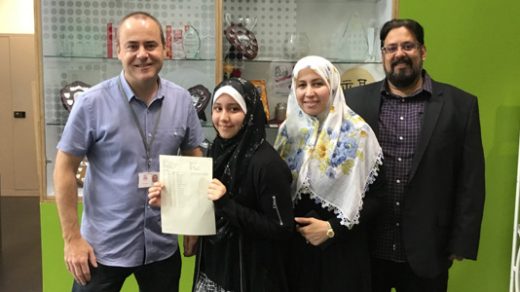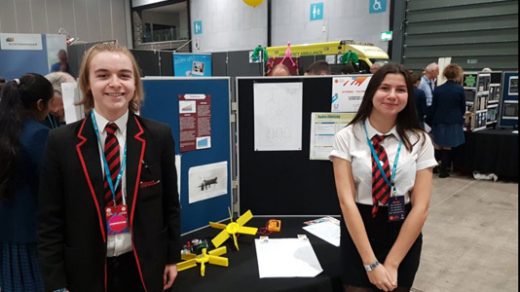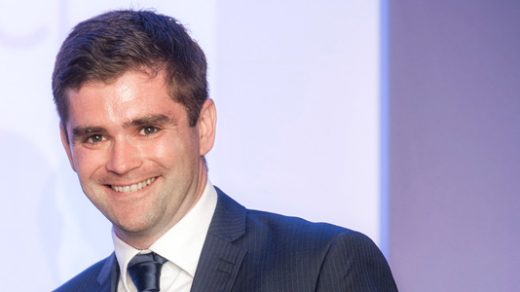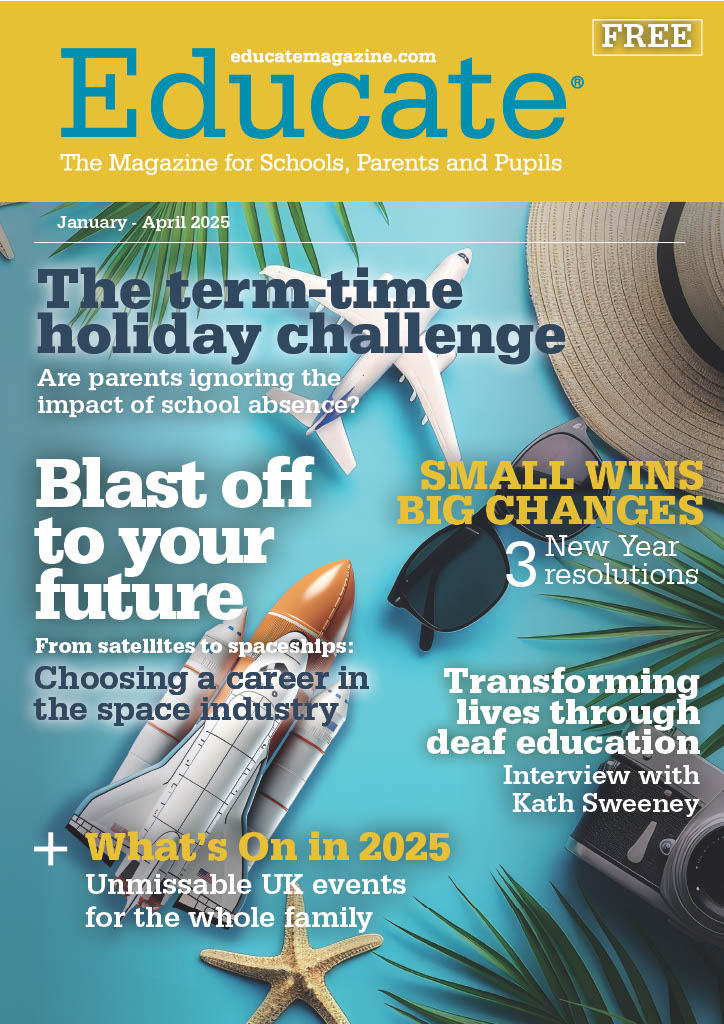New technology which lets students chat to Holocaust survivors through virtual reality rolling out today

Cutting-edge artificial intelligence (AI) and virtual reality (VR) technology has been created to ‘immortalise’ real Holocaust survivors and allow school pupils to have conversations with them – even beyond their lifetimes.
Currently, Holocaust survivors share their experiences with thousands of students every year. But as survivors become older, fewer and frailer, time is approaching when this will not be possible, and where the Holocaust is no longer in living memory.
To address this significant issue, the Holocaust Educational Trust has created a programme using technology that allows survivors to continue to have life-like conversations with pupils, sharing their experiences of life during the Holocaust for generations to come. The technology ‘immortalises’ real Holocaust survivors and their stories in the form of interactive survivor testimonies’ – which has been likened to a talking portrait and can answer up to 1,000 questions which a student may pose.
AI understands the pupil’s question and then the virtual version of the survivor responds with their actual, recorded answer to the question, with technology ensuring it feels like a smooth and natural conversation.
After ‘speaking’ with the survivor, students then use VR headsets to explore key sites related to the survivor’s story, such as where the survivor lived before the war, the places where they were deported, and the concentration camps or ghetto where they were detained – all without leaving their classrooms.
The move is set to revolutionise access to survivor testimony – and wider education – for generations to come. The programme, the first of its kind to be seen in British schools, is being rolled out in schools across Britain from today (20 June).
The technology forms part of the new Testimony 360: People and Places of the Holocaust programme, which has been created by the UK-based charity Holocaust Educational Trust. It has been designed to support the national curriculum and help Year 9 to 13 pupils aged 13 to 18 understand the Holocaust – the murder of six million Jewish men, women and children by the Nazis and their collaborators. It was unveiled to UK pupils yesterday at Sacred Heart Catholic School in Camberwell, London.
How does it work?
Using conversational speech-to-text recognition AI search technology, combined with a volumetric filming technique using a nine-camera rig, the interactive biographies create 3D-like video images of real Holocaust survivors on large classroom screens or individual laptops. This gives students the impression of being face-to-face with survivors.
The AI search tool accesses pre-recorded answers from the survivor to more than 1,000 questions, enabling pupils to hold virtual conversations with the Holocaust survivor and ask them any question about their experience – with post-production techniques ensuring that the conversation and visuals remain smooth and lifelike throughout, giving the feeling of a natural conversation.
The USC Shoah Foundation developed the interactive survivor biography technology through its Dimensions in Testimony program and worked with the Holocaust Educational Trust to bring it to the UK.
Through virtual reality headsets, students can explore multiple 360° stereoscopic virtual spaces connected to survivor testimonies, where they are also able to interact with additional artefacts that bring survivor stories further to life. For example, in the VR depiction of Stutthof concentration camp, where Manfred Goldberg was detained, students can engage with items ranging from a prisoner uniform; a tool used by prisoners who were forced in to labour at the camp and a cigarette case, engraved by an inmate whilst at the camp – all of which help students consider daily life in the camp.
Manfred Goldberg BEM – who is 94 years old, and was nine years old when war broke out – is the first survivor to feature in Testimony 360 for UK pupils. During the Holocaust, Manfred, his mother, and his younger brother were deported from Germany to the Riga Ghetto in Latvia, from which the Nazis regularly selected inmates for mass shootings.

He was subsequently sent to a slave labour camp where his brother was murdered and then, in August 1944, to Stutthof concentration camp where he spent more than eight months as a slave worker. Manfred and other prisoners were sent on a death march before finally being liberated at Neustadt in Germany on 3 May 1945. In 1946 Manfred came to the UK, where he has lived since.
He, alongside three other survivors (Susan Pollack OBE, Hannah Lewis MBE and John Dobai) each spent five days being filmed within a green screen rig, from multiple angles at once using special volumetric capture cameras, giving the feeling of ‘depth’ and three dimensions even when displayed on a standard flat screen television. They each answered over 1,000 questions to ensure their virtual self could answer almost any question a student may pose about their experience of the Holocaust. Susan, Hannah and John’s virtual testimonies are set to be rolled out in schools from 2025.
Yesterday (19 June), the programme was officially launched in a UK school for the first time where pupils at Sacred Heart Catholic School in Camberwell, London, were the first to see the technology in action. Merging the virtual and real worlds, pupils were joined by Manfred Goldberg BEM in real life. Manfred was even able to have a conversation and interact with his virtual self.
The programme has been created to support the national curriculum, ensuring students from all backgrounds, for generations to come, have the opportunity to speak to a survivor and understand where antisemitism and hatred can lead when left unchecked. It is available free of charge to all schools across Britain – who simply need to book a session with the Holocaust Educational Trust. The Holocaust is currently the only historic event which is compulsory within the history curriculum, and was added in 1991 following a campaign by the Holocaust Educational Trust.
Karen Pollock CBE, chief executive of the Holocaust Educational Trust said: “Testimony 360 is a groundbreaking educational programme which will revolutionise how we learn about the Holocaust, allowing young people to hear from eyewitnesses even when they are no longer with us.
“While it is impossible to replace survivors, Testimony 360 will help to ensure that their incredible legacy lives on beyond their lifetimes, and that generations to come will still be able to have the unparalleled experience of hearing directly from a Holocaust survivor, and visiting the places they lived, were imprisoned, and rebuilt their lives.
“With the threat of antisemitism reaching levels not seen since the liberations of the camps, this programme could not be more vital in ensuring that young people understand where antisemitism can and did lead.”
Manfred Goldberg BEM, Holocaust survivor, said: “This technology is simply remarkable – it feels close to magic. Never during those dark days of the Holocaust did I ever imagine that one day I would see myself, and my story, immortalised in this way. I have spoken to thousands of pupils over the years – perhaps now I will make it millions. If this is my legacy, it will be a truly remarkable one.”

Mr Richard Price, history teacher at Sacred Heart Catholic School, said: “It was an absolute honour that my class was chosen to be the first in the UK to experience Testimony 360.
“We have previously been lucky enough to have survivors speak in our school, but this will ensure that future generations of school children will get the opportunity to do the same, even when survivors are sadly no longer with us. Combined with the virtual reality aspect, it allows pupils to connect with the people and places of the Holocaust like never before.
“It’s really exciting to think about the wider applications for history teaching this sort of technology could have in the future.”
School leaders have welcomed the new technology. Paul Whiteman, general secretary at school leaders’ union NAHT, said: “This fantastic use of technology will support the learning of generations of young people. The testimony of survivors is so impactful and this programme will ensure this continues even when they are sadly no longer here to tell their stories.
“Through education we can change minds, and challenge prejudice. Schools have a unique and vital role to play in this work and are committed to doing so as part of a societal-wide approach.”
Testimony 360 is sponsored by The Eyal & Marilyn Ofer Family Foundation in partnership with the Holocaust Educational Trust and the USC Shoah Foundation.
Any school in Britain can now sign up for the Testimony 360 programme here for sessions to take place from September 2024.




